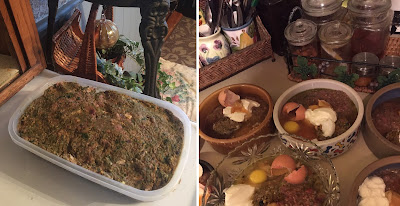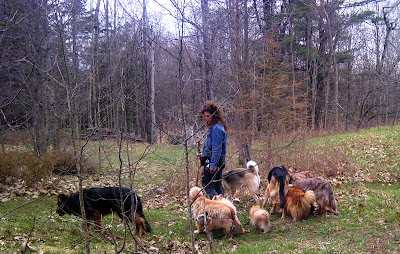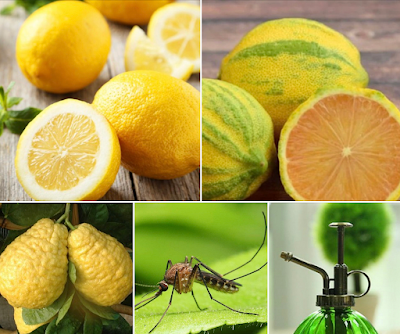DOG TO DOG FOOD AGGRESSION
IS DOG to DOG FOOD AGGRESSION NORMAL?
In a domestic well-balanced and established, canine-canine or human-canine relationship food guarding, possession to the point of aggression is not normal behaviour. Unless this issue is properly addressed and resolved it can and normally will result in escalated levels of aggression overtime - quickly of slowly depending on the situation.
Food guarding / possession reactivity - what you would call aggression, is curable.
FIRST - LET’S UNDERSTAND HOW THIS BEHAVIOUR DEVELOPS
Puppies that are not separated from each other and their adult dogs at too young an age, will learn social manners from the adult dogs just as children do from parents. If the puppies are separated before they have a chance to learn from the adults the opportunity to learn social grace is cut short.
As well, just like all humans, all dogs have their own individual personality. Some dogs are more amenable to ‘getting along’ with others, are naturally calmer, more generous, less dominating etc; while other dogs have more of a tendency to be dominating , anxious, reactive etc.
The situations, people and other dogs that they are exposed to may bring out the best in the dogs natural disposition or enable the less desirable side of its personality. This is why providing leadership to your dog is very important - just as with children, every dog should receive patient couching and mentoring to bring forth the best of its nature - in order to do this we must also ensure that undesirable behaviours are not enabled.
RESCUED DOGS
If your dog is a rescue and has issues around food…
A - In its past, your dog may have had to forage, struggle or fight for food to survive, as a result the dog may have learned to be protective of its food;
B - If the dog that you have adopted was always well feed but has exhibited food guarding issues from the day of adoption, it is likely that the dog was never taught proper rules and boundaries around food.
The food guarding and aggression is curable. All that is required is firm, fair, patient and consistent leadership and regular meals.
IF YOU HAVE HAD YOUR DOG SINCE PUPPY-HOOD
If you have had your dog since a young age and it guards, is possessive and reactive around food then you need to ramp-up your leadership skills. In the absence of rules and boundaries your dog has made up its own rules. Puppies and teenage dogs, much like human toddlers, children and teenagers will test their abilities to manipulate and ‘get away’ with things. If no one is there to push back from a confident, firm, fair and committed state-of-being the child learns that they can get away with the behaviour; the child learns that manipulation, tantrums are powerful tools to get what they think they want. If no one is able to instruct them on what is acceptable, if the adults begin to fear the tantrums, avoid and give-in to the child’s demands, the child never has the opportunity to learn how to properly cope. It is no different for a puppy or dog and it should be noted that dogs learn very quickly.
SO WHAT REALLY HAPPENED TO START THIS?
Well, the first time your puppy growled, barred its teeth or snapped the opportunity to properly address and correct the behaviour was missed. This was the ‘test’ period. This usually happens because the human is simply caught off-guard, for example…
A - You just did not know that it would develop into a more serious problem;
B - You might have been surprised or shocked, but did not know how to correct the situation;
C - You may have tried to address the behaviour, but you did so from an emotional stat-of-being…i.e. you were upset, angry or fearful. This would only reinforce your dog’s lack of balance.
Once the dog has either gotten away with the behaviour once or you have failed to address the behaviour properly the dog now knows it can behave is it wants too. The next time the situation occurs the dog is no longer testing the situation it is controlling the situation. That is a very powerful position for the dog. You have, without knowing it…
A - Lost the respect of your dog to one degree or another; to understand how dogs assign respect you can read this article.
B - Lost ownership and leadership of the situation - you are not in control, your dog is.
SECOND - IT IS VERY IMPORTANT TO UNDERSTAND THAT SYMPTOMS NEVER EXIST IN ISOLATION
What do I mean? Well reactivity of a dog towards another dog or towards a human is only a symptom of a bigger issue. The issue is usually lack of leadership in the dog’s life, which results in anxiety, insecurity, fear or dominating behaviour. There are normally other symptoms too - many people just don’t realize what those symptoms are. A symptom can be as simple as any one of the following examples:
A - Your dog bolting down the stairs in front of you or bolting out the back door to the yard;
B - Your dog grabbing food as it drops to the floor, food you did not want it to have, but you can’t take the food away as your dog ‘does not like that’;
C - Your dog owning the door and guests as people arrive to visit;
D - Your dog destroys - owns - kills its toys;
E - Your dog habitually pulls on the leash;
F - Your dog will not allow you to clip its nails, clean its ears, etc.
G - your dog chews on anything it wants to;
E - your dog counter and table surfs for food.
I have clients who call me to set-up a session - they explain their situation by telling me that ‘their dog just has this one problem’. I start asking them questions and they suddenly realize the problem consists of more than one element.
I have yet to go into a situation where there is just one problem behaviour!
Each and every little thing must be addressed or you cannot fix the bigger things. Each little tiny thing feeds into the whole. To try to do so over the span of days or weeks is a recipe for failure. It does the dog an injustice and sets both dogs and humans up for failure. If you only address one of several issues the opportunity for real permanent change is lost.
FOOD IS POWER
Right now your dog 'owns' the food - that gives your dog power over you and its pack mates. This is really a psychological issue - this is a test of wills...your dog’s will your will...your dog’s will is stronger at this point. Anything that your dog guards or obsesses over becomes an item of high value - power. If he has control of it he is the one in power. If you have control over the item you are the one with the power. Your state of power should not be one of dominance - otherwise you repeat what your dog does. Your state of power must be that of one who is confident, fair and calm - not dominance but instead leadership. To understand the difference between dominance and leadership I suggest that you read these two articles.
TO FIX THIS SITUATION…
You need to take back ownership of the food and of the situation - both in your mind (thoughts) and in the physical sense.
Respect is a two-way thing and must be earned - food is a great place to gain ground. Mentoring/coaching/directing your dog must always be done from a calm (without excess emotions), confident and fully committed state of mind. In addition, dogs love to please their humans but if handled roughly/ unfairly it can bring out the ire in them, especially if your dog has lost some respect for you.
Remember that your dog did not learn this behaviour on his own - he has reached this point because you have inadvertently (without intention, no blame on you either!) not known how to direct him.
There is no place for anger, frustration or fear if you want to change this situation. Remember that when we fear we give up much of our power to that thing/person that we fear. Replace fear with understanding.
ONE - ADDRESSING THE HUMAN PSYCHOLOGY 'SIDE OF THINGS'
You must emotionally disengage. Then you need to engage your working-mind mode.
So, when you go to address the dog that guards food you must first put yourself in a mind set that is calm (no excess emotion, no tension, no fear, no frustration, confident;
patient, persistent (your dog is going to be persistent, so you must be even more persistent); your will and determination must be 100% committed!
Do not anticipate the future based on the past...so in your mind you must not: anticipate and therefore color each present or future moment by anticipating that your dog will behave as he always has in the past. Your dog is insightful - he can read your thoughts via your body language before you are aware of what your mind communicates. Sounds crazy at first - but read on...
When your mind is tense, frustrated (emotional) that state of mind directly and instantaneously translates to you body. For example tension in your shoulders, around your eyes and mouth, in the clenching of your hands, tightness of your lips. People are often unaware of this but dogs sense it right away. This tells the dog that their human is not in control, is not confident - is not a leader, therefore the dog will not respect and not follow your direction.
Let the past go - but respect it. So do not carry fear, nervousness, etc. forward (as it will hamper your ability to lead and effectively communicate/address. Instead understand and be ready, willing and able to address should behaviour occur.
Change your perspective - perspective is everything. Look at such behavioural incidents as an opportunity instead of with dread. See this as an opportunity to be the leader, to help your dog. Opportunity is - this is your opportunity to make a change for the better! Let the anticipation that creates nerves go - this is your opposition - your enemy.
Adjust your expectations - you have to earn the role of leader, if you have not done the things noted above you will not yet be seen as a leader. Remember that your dog has 'gotten away' with this behaviour to date. He is going to protest when you disagree with his behaviour (at first) - don’t worry, don’t see this as defeat, instead persist!
Remember to always put things in context - you can use yourself as an example. When you get a habit and some one says 'change it' - do you resist? Yes at first. But if there is calm, logic behind the reasoning and persistent follow through the habit starts to dissolve.
Do not be hypocritical - remember what it takes to change your habits - patience, consistent persistence - provide these things for your dog - your job is to coach and mentor, lead by example.
Remember, dogs do not hold grudges - they live in the moment and as such are very willing to change their ways if you communicate to them properly so they can understand what you want. It is more difficult to change a person’s habits than a dog’s - remember this and let it give you confidence.
Be aware of yourself and your own state of being first, LEAD BY EXAMPLE...train yourself to understand first and then you can coach your dog. Make sure you have read this article on the Sensitivity of Dogs and How Dogs Communicate.
SO, NOW YOU ARE READY TO COACH AND MENTOR YOUR DOG
Your dog does not require training, it requires coaching and mentoring! These words are important as they speak to responsibility, leadership & confidence. This is perspective.
OK, so you now should understand more about how our state of being, our expectations, our thoughts can have an enormous impact on outcomes, so put that calm, confident working mode in place and lets go!
And Just before we start too more very important points...
ONE - DON’T ENGAGE IN AN
ARGUMENT WITH YOUR DOG AND DON'T WHINE!
If you expect trouble
you will get trouble…your dog can feel if you are anticipating an argument,
instead remember to think I direct, my dog listens and that is it! Be 100%
committed - your dog knows when you are not. Your dog knows when he has an edge
to manipulate and control. Be fair, but be determined.
Yelling, frustration, anger - it’s all an argument. This is a psychological test of wills - make
sure your will is greater and comes from a place of confidence and strength of
commitment.
And please do not say
to your dog ‘would you just stop that!’ or I wish you would stop doing that’,
or ‘you are bothering me, quite it!’ If you do this you are not providing
direction, nor are you embracing the role of leader. You are whining and
complaining not providing direction! When we whine instead of direct, we give
our dog a choice - you can listen to me or not. Just like humans, most will
choose the ‘not’ option.
PROVIDE A COMPLETE
DIRECTION TO YOUR DOG
Be prepared to
provide a full instruction. A full instruction consists of:
1. Getting your dogs attention;
2. Telling him what you do not what
him to do;
3. Telling him what you do want him to
do instead, and;
4. Following through to correct him
if he backslides into the unwanted behaviour.
The leadership role
is one of coaching and mentoring with fair, firm, clear direction. Never match
your dog’s state but you do have to match the intensity of his behaviour. I see
a lot of people doing only step 2. Then the poor dog gets in trouble as it goes
back to doing the unwanted behaviour as its human has not provided a full set
of instructions! Blame yourself, not your dog!
OK, LET'S START...
The framework for correction includes the space in which you prepare food, feed the dogs and the food bowls…
ONE - Claim the space around which you prepare food. By this I mean that the space should be yours alone to occupy (we will call it 'working zone'), have your dog sit just outside of your working zone (this can be just in the doorway to the space or 6' ft away from you as you choose) - this then becomes your dog's 'waiting zone'.
TWO - Get him to sit in the 'waiting zone', the second he gets up and starts to move forward (without your invitation) into the waiting zone' immediately stop what your are doing and walk into his space with the right 'energy' (meaning confidently, calmly {without emotion} and with complete commitment), back him up by putting your body in front of his and then move forward, until he is back in the waiting zone - then get him to sit. Repeat this with the same energy if he encroaches into your 'working zone'. This is a test of wills. To win his respect for your leadership you most calmly, confidently and persistently show your will to be even stronger than his. If he is accustomed to challenging you - this will take some time and persistence the first few times, but will get exponentially better if you follow through and stick to this methodology.
THREE - When you are finished preparing his food, invite him to come over to the 'eating zone' (the space that you designate to be his place to eat). If he moves into the eating zone in a hasty/excited/domineering state get him to go back to the 'waiting zone'. Again, through every step of this process you must set the framework - if his behaviour is not calm, stop the process and go back - have him sit be calm and then invite him back.
FOUR - Once he is on the ‘feeding zone' have him sit and you keep ownership of the food bowl until he settles down. Meaning that:
1- His bum stays firmly planted on the ground, regardless of where you stand with the bowl;
2 - He does not nose you or the bowl;
3 - Growl, bar his teeth or snap at you or his pack mates etc. In your mind you must understand that the food is yours until you give it to him. You need to stand your ground (calmly, confidently) if he gets a little pushy just move your body forward a little - he will understand he needs to back-off;
4 - When he is calm, with that feeling of ownership in your mind place the bowl down a foot or two in front of him with your foot against/in front of the bowl and stand your ground in mind and body;
5 - He should not touch the bowl yet - then move your foot away and invite him to eat;
6 - If he growls, snarls, bars his teeth or snaps at any of his pack mates…
The split second your dog shows any signs of guarding, dominating, reactive behaviour - disagree!
If you wait to react 30 seconds after your dog has displayed the behaviour it is very difficult for your dog to understand what your are disagreeing to. It also gives your dog time to escalate to more intense behaviour - disagree instantly!
Do not disagree with an excited voice, in a nervous state, etc...do not yell, do not match the dogs state be the opposite! Calm, in-control-confident;
To disagree - be calm confident and touch your dog quickly, firmly with the tips of your fingers at its waist or neck (this is giving the dog a quick nip or bite) and is intended to get your dogs full attention, then say ‘hey’, or ‘no’, or ‘shh’. Make sure the intensity of the ‘bite’ and your voice matches the intensity of the dog – but do not match its state…be calm, confident. Never touch with nervous, fearful or angry energy, touch only with calm, confident energy.
If your dog is also reactive to you as well as pack mates, follow through - use your body to claim the space and the food bowl.
When you put his food bowl down, and invite him to eat, keep your foot touching the bowl - this will say to him that I am allowing you to eat, but I still own the food.
Never, ever try to stop reactivity (aggressive behaviour) from an angry or tense state of being – you just reinforce the aggression in your dog as you are in the same state as the dog.
Learn to observe and read your dog – don’t anticipate but you must strategically address when behaviour starts. If you anticipate you will spark the incident. Instead just observe your dog’s body language. If you see that your dog is starting to fixate, or about to growl – disagree before the behaviour escalates.
You must coach and mentor consistently as noted above every time and your dog will start to back down, and desist, but remember to be consistent and never ever let an incident go un-addressed. Depending on the dog, this may take a day, several days, a week, a month.
If your dog’s behaviour has reached a point were you do not feel confident to intervene on your own as you feel you will place yourself, other people or other dogs at risk of harm, please do not attempt any of the techniques described above on your own - seek the help of a professional. Please know that your dog’s behaviour is correctable - just not by you! At this point you and your dog(s) have psychological trauma. It must be reversed correctly or further damage will occur.
Engage a professional. The approach should be holistic - meaning that it will address all behavioural issues - yours and your dog’s. Do not engage a professional who uses only treats to ‘train’, who uses pinch collars or domination techniques - this will only make your dog(s) more confused, and traumatized.
When you put his food bowl down, and invite him to eat, keep your foot touching the bowl - this will say to him that I am allowing you to eat, but I still own the food.
Never, ever try to stop reactivity (aggressive behaviour) from an angry or tense state of being – you just reinforce the aggression in your dog as you are in the same state as the dog.
Learn to observe and read your dog – don’t anticipate but you must strategically address when behaviour starts. If you anticipate you will spark the incident. Instead just observe your dog’s body language. If you see that your dog is starting to fixate, or about to growl – disagree before the behaviour escalates.
You must coach and mentor consistently as noted above every time and your dog will start to back down, and desist, but remember to be consistent and never ever let an incident go un-addressed. Depending on the dog, this may take a day, several days, a week, a month.
If your dog’s behaviour has reached a point were you do not feel confident to intervene on your own as you feel you will place yourself, other people or other dogs at risk of harm, please do not attempt any of the techniques described above on your own - seek the help of a professional. Please know that your dog’s behaviour is correctable - just not by you! At this point you and your dog(s) have psychological trauma. It must be reversed correctly or further damage will occur.
Engage a professional. The approach should be holistic - meaning that it will address all behavioural issues - yours and your dog’s. Do not engage a professional who uses only treats to ‘train’, who uses pinch collars or domination techniques - this will only make your dog(s) more confused, and traumatized.
Holistic Diet, Nutrition, Wellness Services Tailored to Your Individual Dog and Cat
For information about my holistic diet, nutrition and wellness services, visit my holistic wellness services page.
Maintain good health | Address acute and chronic health issues | Pre and post surgery support and recovery
My holistic wellness services are available worldwide via video consultation.
🌎 USA | Canada | UK | Europe | Australia | New Zealand | Asia | South and Central America | Africa | UAE
📱FaceTime | Facebook | Skype | WhatsApp
To set-up your holistic wellness consultation get in-touch via email, go to my contact me page.
Holistic Behavioral Services for Your Dog
For information about my holistic behavioral services, visit my holistic behavioral services page.
For dogs of all ages, sizes and breeds.
My behavioral services are available worldwide via video consultation.
🌎 USA | Canada | UK | Europe | Australia | New Zealand | Asia | South and Central America | Africa | UAE
📱FaceTime | Facebook | Skype | WhatsApp
To set-up your holistic behavioral session get in-touch via email, go to my contact me page.
Affiliations to Companies
✓ None.
✓ I don't sell food, supplements, or other products.
✓ I'm not aligned with any companies.
Article and graphics by Karen Rosenfeld.















